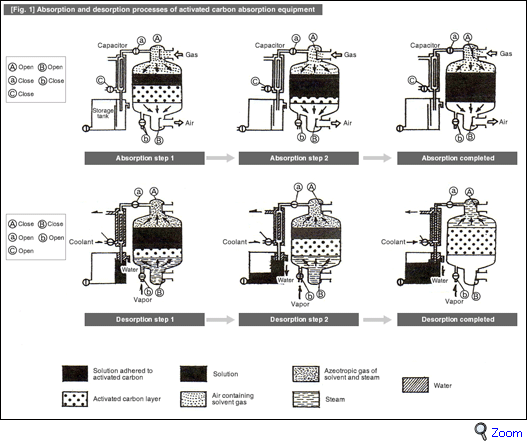HOME > Surface Finishing Tutorial > #230 Measures for Organic Solvents
Surface Finishing Tutorial
#230 Measures for Organic Solvents
Category : Environmental conservation
March11, 2016
Because organic solvents are used in surface treatments including metal cleaning and painting, the employers are required to protect their employees under the provisions of the Ordinance on Prevention of Organic Solvent Poisoning. In addition, a leakage of organic solvents outside of the plant could cause troubles with the neighborhood due to its odor and health risks.
To prevent such incidents, the following steps have been adopted:
| 1. | Use an appropriate hood to enclose the area where organic solvents are handled. Then, vacuum up by ventilation equipment.(local ventilation) | |
| 2. | Use an activated carbon filter to absorb and remove organic solvents. | |
| 3. | Discharge the absorbed air to the outside. |
[Table 1] shows the capture velocity of local ventilation equipment. [Table 2] shows the required ventilation volume. In addition, [Fig. 1] illustrates the absorption and desorption processes of activated carbon absorption equipment.
[Table 1] Capture velocity of local ventilation equipment
|
|||||||||||||
[Table 2] Required ventilation volume for ventilation equipment
|
- Environmental conservation
- Hot Dipping
- Anodic Oxidation Process
- Anodic oxidation treatment
- Anodizing
- Corrosion - Corrosion Protection
- Electroless Plating
- Electroplating
- Heat treating
- Hydrogen embrittlement
- Metal cleaning
- Metal etching
- Painting
- Special paints
- Surface Treatment
- Surface-treated steel sheets
- Thermal Spraying




